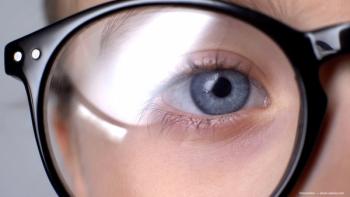
Novel glaucoma drug rivals standard therapy
Latanoprostene bunod is a probable new drug for the treatment of glaucoma that seems to be well tolerated and potent in lowering IOP.
Take Home:
Latanoprostene bunod is a probable new drug for the treatment of glaucoma that seems to be well tolerated and potent in lowering IOP.
By Roxanne Nelson; Reviewed by L. Jay Katz, MD
Philadelphia-A new drug shows potential as a therapy for glaucoma, according to study results that showed it performed better than a standard therapy.
Treatment with latanoprostene bunod 0.024% resulted in significantly greater reductions in mean diurnal IOP than with latanoprost ophthalmic solution in patients with open-angle glaucoma (OAG) or ocular hypertension.
“(However, the drug) is not yet FDA approved,” said L. Jay Katz, MD, director of the Glaucoma Service, Wills Eye Institute and professor of ophthalmology, Thomas Jefferson University, Philadelphia. “Latanoprost is the most commonly used glaucoma medication.”
Latanoprostene bunod is a nitric oxide-donating prostaglandin F2-alpha analog that is currently in development for the treatment of glaucoma and ocular hypertension. It is intended for the reduction of IOP in patients with elevated IOP due to glaucoma or ocular hypertension.
Examining the study
The results of the study were very promising, Dr. Katz said.
Based on those results, he said, it has the potential to be a first-line agent if confirmed in larger clinical trials.
In this study, latanoprostene bunod 0.024% was compared with latanoprost 0.005% ophthalmic solution in a randomized trial.
The goal was to assess the efficacy of the agent in reducing and maintaining mean diurnal IOP for up to 29 days in patients with OAG or ocular hypertension, and its performance against a standard therapy.
The study participants were randomly assigned to either latanoprostene bunod 0.024% (n = 83) or latanoprost 0.005% ophthalmic solution (n = 82). All patients had an IOP ≥26 and ≤32 mm Hg and a diagnosis of OAG or ocular hypertension.
The two groups had similar demographics: The mean age of the patients was 61 years, 77.6% were white, and 66.7% were women. In addition, almost half (43.0%) were treatment na
The groups received their drug dosage once a day in the evening for a total of 28 days. Evaluations for safety and efficacy and safety evaluations occurred on days 7, 14, 28, and 29.
The efficacy assessments included evaluating the mean diurnal IOPs and the proportion of patients who were able to maintain a mean diurnal IOP at ≤18 mm Hg.
For safety assessment, the researchers measured adverse events, best-corrected visual acuity, ocular tolerability, ocular signs, and vital signs. An analysis of covariance model with fixed-effect terms was performed, and for measuring changes from baseline IOP, t-tests were performed for all treatment groups.
The findings
Results showed that at days 7, 14, and 28, there were statistically greater reductions in mean diurnal IOPs for patients treated with latanoprostene bunod 0.024%, as compared with latanoprost 0.005% at day 7 (8.3 versus 7.3 mm Hg, respectively; p = 0.0325), day 14 (8.9 versus 7.7 mm Hg; p = 0.0145), and day 28 (9 versus 7.8 mm Hg; p = 0.0051).
There were significantly more patients who received latanoprostene bunod 0.024% that had a study eye mean diurnal IOP ≤18 mm Hg at days 7 (p = 0.0057), 14 (p = 0.0464), 28 (p = 0.0061), and 29 (p = 0.026), as compared with those who received latanoprost 0.005%.
All adverse events related to the treatment were mild or moderate in severity, and the percentages of patients with conjunctival hyperemia were similar across both treatment groups.
It was concluded that latanoprostene bunod 0.024% produced significantly greater reductions (~1 mm Hg) in mean diurnal IOP for up to 29 days as compared with latanoprost 0.005%.
L. Jay Katz, MD
P: 215-928-3197
Dr. Katz has no financial interest in the subject matter.
Newsletter
Don’t miss out—get Ophthalmology Times updates on the latest clinical advancements and expert interviews, straight to your inbox.



















































.png)


